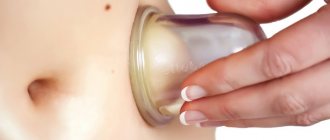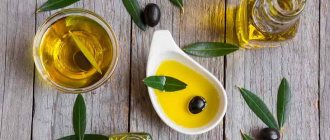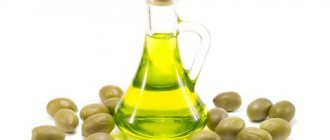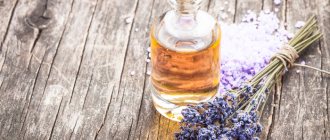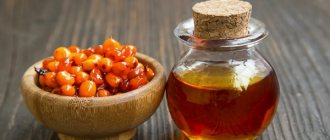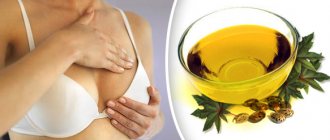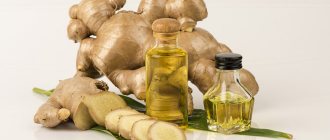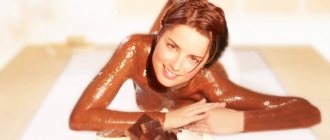Natural and cosmetic body oils are an incredibly valuable product due to the content of vitamins, antioxidants, lipids, micro- and macroelements, fatty acids and other beneficial substances. The skin of the face and body is constantly exposed to stress due to the hot sun, frost, dry indoor air, temperature changes and poor ecology. Wrong lifestyle and bad habits also play an important role.
This is why you need to use body oil: it provides intensive nutrition to cells, helps maintain optimal skin hydration, saturates with beneficial components, softens and soothes the skin. In addition, natural preparations have a beneficial effect on preserving the beauty and youth of the skin, its elasticity, and also fight cellulite, inflammation, dryness and flaking, improve the functioning of the sebaceous glands and protect against adverse external factors.
What are the benefits of body oils?
There are several types of oils: natural plant and essential oils, which are made from different parts of plants and their fruits, as well as mineral oils, which are a petroleum refining product. For cosmetic purposes, the most valuable are natural vegetable oils, which can be used on the body independently, as well as added to ready-made creams, emulsions, industrial scrubs, and enriched with esters to impart aroma and additional beneficial qualities. Mineral products have virtually no benefits for the skin of the body.
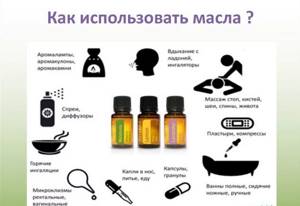
In addition to those listed, there are also cosmetic oils - independent products that are ready for use for beauty purposes. They have a complex chemical composition and contain several components, for example, basic vegetable oils, esters, extracts and vitamins. They have a light texture, they are perfectly absorbed by the skin, especially dehydrated ones, moisturizing and soothing it.
Modern technologies do not stand still and cosmetic companies are working tirelessly to help deliver beneficial components from oils without loss to the skin. This is how dry oil appeared, which has a non-sticky, silky consistency that is well absorbed and does not stain clothes. There is also a technology for churning butter. This product is very pleasant to apply, its texture resembles a cream, and when it gets on the skin it melts and turns into an oil. Plus, it has a wonderful aroma!
Each oil product is characterized by its own unique composition, consisting of minerals, vitamins, and fatty acids. Some are especially rich in omega 3,6,9 and other beneficial components, others – in fat-soluble vitamins. That’s why cosmetic oils use not just one, but combinations of different oils for a more effective effect on the skin of the body.
Beneficial properties of vegetable and essential oils:
- Nourishment, softening, elimination of peeling (any basic products, esters of chamomile, rose, sandalwood, jasmine and rosewood).
- Moisturizing (apricot, saffron, rose, cypress, neroli).
- Calming and healing effect (chamomile, sandalwood and lavender extracts).
- Anti-aging effect (avocado, camelina, argan and almond).
- Normalization of sebum secretion, cleansing (esters of geranium, tea and rose tree, all citrus fruits, eucalyptus, pine).
- Lifting (esters of lime, sandalwood, neroli, mandarin and myrrh).
- Anti-cellulite effect (extracts from ginger, cypress, dill, black pepper, rosemary, grapefruit, lemon, juniper).
- Toning (oils of rose, mint, geranium, jasmine, bergamot, lavender).
- Reduces the visible appearance of scars and stretch marks (essors of rosewood, fennel, frankincense, geranium, neroli, rosemary and mint).
Which is better: body oil or cream?
Both of these tools do their job perfectly. But the oil has an undeniable advantage - nourishing the skin. Only oil products contain such a large amount of vitamins, lipids, minerals, fatty acids and other components useful for nourishing the skin. In addition, they are suitable for any skin type and are very economical in consumption. Just a few drops are enough to apply to the entire body.
But oil preparations do a worse job of moisturizing, because they do not contain water. But the oil can perfectly retain moisture inside the skin, preventing its loss and without interfering with breathing.
Creams have a lighter texture and are absorbed faster. Experts recommend using both products alternately, for example, oil in the evening after a shower or bath, and cream in the morning.
Shine everywhere, or do-it-yourself golden body oil
Good afternoon Beauticians! I want to tell you (and show you the process) about my new product from a series of homemade cosmetics, which I have been using with pleasure for several weeks now. I made a moisturizing perfumed body oil with osmanthus, and to make it more interesting, I added the glamorous shine of golden pollen to it. It does not have an anti-cellulite or smoothing effect, it is just a good thing for evening mood and pleasure. For anyone interested, please see the cut))

Every good product starts with an idea. My idea was to create a natural body oil that would not only moisturize the skin, but also bring aesthetic pleasure - with a pleasant strong aroma and a pearlescent silky shine. When choosing oils, I did not limit myself to standard almond oil, which in its pure form slightly dries out my skin, so I added macadamia oil (winter option, nourishes), argan (promotes elasticity) and squalane. Squalane is a fairly common guest in expensive natural cosmetics brands, since it is quite expensive, but at the same time, squalane moisturizes very well and provides easy absorption. This is a winter option for choosing oils; for summer I would choose lighter ones.
For the aroma, I added a ready-made mixture of essential oils with the self-explanatory name Gute Laune - Good Mood, consisting of essential oils of orange, lime, osmanthus, vanilla. I really like and often use ready-made mixtures of essential oils; they are usually well selected and balanced, with thick floral aromas. Vitamin E (tocopherol acetate) was added as an antioxidant - it protects oil products from rancidity and ensures that the components remain fresh.

Now the recipe itself - 30 ml almond oil - 30 ml macadamia oil - 15 ml argan oil - 15 ml squalane - 20-30 drops of a ready-made mixture of essential oils - 1 ml vitamin E - half a teaspoon of mother-of-pearl (mica, pigment)
Accessories. In addition to the components themselves, you will need measuring spoons (or scales, or a measuring beaker), a mixing bowl, a disposable syringe, a small mixer - cappuccino maker and a glass bottle for oil. I measured all the oils with a 15 ml measuring spoon. An empty glass bottle for soy cream, ideal for this case))
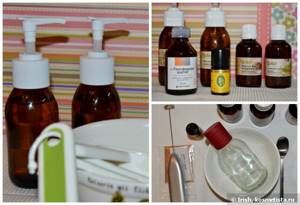
When we have prepared everything we need and sent our children/husbands to bed (underline what is necessary), we begin to cast a spell - measure all the oils into one large cup with a measuring spoon:
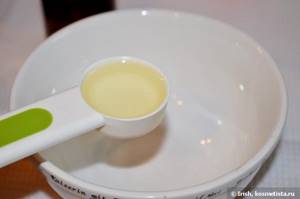

Now add vitamin E (it’s convenient to measure it with a disposable syringe) and our mixture of essential oils. Then - pearlescent pigment (miku), mine is pinkish with golden particles. To ensure that the pigment is evenly distributed in the oil, stir the mixture with a spoon and then with a small cappuccino mixer.
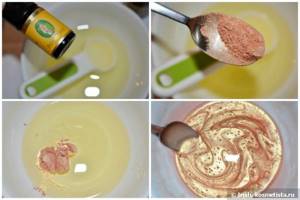
Using a syringe, pour the oil into the bottle.

That's it, the moisturizing oil is ready. It is easily applied to the skin, glitter is not visible, since the pearl particles are very small, but overall the skin becomes slightly radiant. The texture of the oil is not very greasy and oily, it is absorbed quite easily, leaving a velvety feeling on the skin and an aromatic haze.

I apply it in the evening after a shower on slightly damp body skin, when I want mood, pleasure, relaxation and a pleasant smell. You can add a few drops of oil to your bath to prevent the water from drying out your skin, or add it to your body cream.
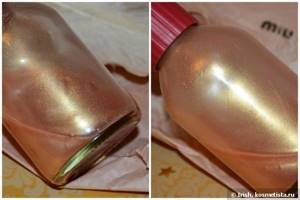
The description of the cooking process turned out to be much longer than the process itself, which takes 15 minutes at most))
RS You can see how the oil looks on the body in the comments below, there is a photo. Thank you for stopping by and reading to the end))
Increase
How to use body oil: effective ways
Oil products are capable of many things; they can be used independently and in combination with other useful products, ready-made cosmetics and essential oils.
Body oil - how to use:
- to remove cosmetics;
- instead of a moisturizer (one caveat - it takes longer to absorb than a cream);
- as the main component in oil wraps;
- for nourishing and softening the skin of the hands, cuticles and strengthening nails;
- to relax in the bath (a few drops of aroma oil and half an hour of free time are enough);
- to soften the skin on the elbows and heels;
- for body massage (including anti-cellulite massage with citrus esters);
- enrichment of finished industrial cosmetics (creams, lotions, body scrubs).
You can use body oil by combining its use with your favorite cream. First, you need to apply an oil product to the skin - it will act as an intensive serum, and then a cream on top of it, which in turn will “seal” the oil on the skin, eliminating excessive oiliness.
Cosmetic oils for skin: benefit or harm?
Vegetable oils are included in cosmetic products to nourish and restore the skin. And besides, they can be applied to the skin in its pure form to “feed” it. But is it worth getting carried away with oils and constantly “feeding” your skin with them?
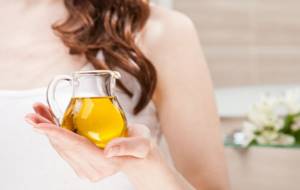
To understand why vegetable oils can be either beneficial or not, you need to understand how the very top layer of the skin, which is affected by cosmetics, works.
The top layer of skin is called the epidermis, and its outer part, consisting of dead cells (scales), is the stratum corneum. This is where all the “attacks” of cosmetics fall.
The main task of horny scales is to protect the epidermis and other layers of skin, not allowing anything inside. The space between them is filled with a mixture of lipids (fats) and protein, and is called the lipid barrier of the skin. By gluing the horny scales together, the lipid barrier acts like cement, ensuring integrity, and therefore health, of the stratum corneum.
Well, what does oil have to do with it? And despite the fact that vegetable oils are also mixtures of lipids, and when we apply pure oil to the skin, it penetrates into the space between the horny scales and begins to change the composition of the lipid layers.
And if there are few external lipids that make up the oil, then they quickly pass through the stratum corneum, and once they reach living cells, they can be used to build a lipid barrier. If there are a lot of external lipids, then when integrated into lipid layers, they begin to change their composition and properties, which can lead to the destruction of the protective barrier. Because of this, the skin begins to have problems with moisture regulation, so with uncontrolled use of pure oils, the skin begins to dry out.
The picture is completely different if the lipid layer is damaged and needs to be “repaired” as soon as possible. In this case, vegetable oils can be very useful, acting as an auxiliary “cement mortar”. And, of course, oils act differently in cosmetics, because, firstly, their concentration is much lower than when used in their pure form, and secondly, in the composition their effect is balanced by other ingredients.
Oils and comedogenicity

Can oils clog pores and cause acne? Yes they can. But, unfortunately, it is impossible to give a list of “dangerous oils”, since everything greatly depends on the condition of the skin. However, here are a few oils that are not recommended for use on your skin if you have acne-prone or oily skin:
- Wheat germ oil
- Coconut oil
- Cacao butter
4 Tips to Safely Use Pure Vegetable Oil
1. Vegetable oils can be used periodically and for short periods of time to support the skin during difficult times.
2. Oils do not moisturize the skin! To increase the level of hydration, you need to use products with components such as glycerin, urea, lactic acid, soluble collagen, beta-glucan (a polysaccharide from yeast), hyaluronic acid, etc.
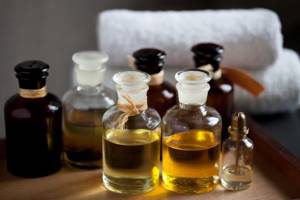
3. It is better to apply the oil to slightly damp skin. It is useful to use floral waters (hydrolates) for the face.
4. To keep your skin looking good while using oil, you need to exfoliate it regularly. This is especially true for body oils. Otherwise, the stratum corneum ceases to renew itself normally, and the skin begins to look dull and uneven.
Source: “New cosmetology”, A. Margolina, E. Hernandez.
How to use body oil to nourish and moisturize after a shower?
There are many ways to use oil preparations for the body, however, this remains the most effective.
- The oil should be applied with massage movements to the skin immediately after a bath or shower, lightly blotting the body with a towel.
- A small dose of the product (up to 1 ml) needs to be warmed in the palms of your hands and applied to the desired area. It is better to warm up each portion before applying to the desired area.
- You need to move from the tips of your toes and arms upward, and in the abdominal area move only clockwise.
- You should not use a large amount of oil at once; it should not drain. Excess can be blotted with a clean napkin or paper towel.
- After application, it is advisable to wait 15-20 minutes so as not to stain your clothes.
Advice
Body care, including using natural preparations, should be regular! Only in this case can you expect quick and fruitful results.
For skin prone to dryness, it is better to use oil products with a thick texture, and for normal or oily skin, use lighter oils or diluted with water.
How to use body oil for wraps?
This method of using natural oil products makes it possible to nourish the epidermis with useful substances and vitamins, replenish their deficiency, and also significantly improve the appearance of the skin. Course: once every 2 weeks, and in order to maintain healthy skin, 1 ruble/month is enough.
You can apply wraps with vegetable and essential oils at home for various areas of the body (buttocks, thighs, abdomen, waist, arms, etc.). Proportions: for 50 ml of base oil (olive, almond, etc.) you need 5 drops of ether.
There are two effective ways to carry out the procedure:
- The first method: heat the oil in your palms and apply to a selected area of the body, rub, wrap in cling film and insulate with a towel (scarf, soft cloth, shawl).
- The second method: cut strips of linen or cotton fabric, dip them in an oil mixture heated in a water bath and apply to problem areas of the body.
The duration of the wrapping procedure is 45 minutes. During the session, it is better to lie down and relax. After completion, you need to take a shower without using detergents.
This is interesting!
Why is it useful to use body scrubs with oils?
Grape seed oil
The product contains vitamin E, proanthocyanidins, Omega-6 and Omega-9.
Main areas of application of the product:
- for massage;
- for makeup base and remover;
- for care of the area around the eyes;
- for creating masks with essential oils.
How to apply
The product is applied only to clean skin. To enhance the effect, you can slightly heat the product in a water bath and then apply it.
The product can be used both in pure form and in combination with other components.
Beneficial properties and harm
Benefits of using the drug:
- nutrition;
- regulation of the sebaceous glands;
- elimination of redness and rashes;
- rejuvenation.
Harm can only occur in case of individual intolerance.
Body oil: how to use for massage?
For body massage, it is better to use natural plant oils, their combinations with each other and esters. You should select them based on your skin type, needs and expected effect.
Massage movements should be light, pressure should be smooth, and their intensity should gradually increase. The oil product or mixture must be preheated in the palms of your hands.
This is interesting!
You can find out which base and essential oils are most effective for different skin types during body massage in this article.
The most sensitive areas are the chest and abdomen; here massage movements should be as light and superficial as possible. The abdomen needs to be worked clockwise. Foot massage must be performed from bottom to top: first the feet, then the ankles, thighs and buttocks.
An oil massage of the hands should begin with the hands, gradually moving to the elbows and shoulders. Then smoothly move onto your back. It is better to massage your back with light circular movements from the center to the sides, without affecting the spine, working the surface from the buttocks to the neck.
After completing the massage session, it is advisable to throw on a warm robe to prolong the warming effect.
